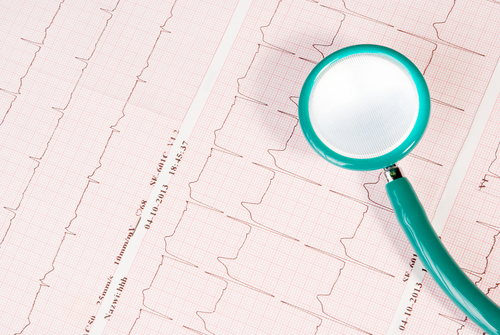Cardiac Arrhythmias Deadly for Pulmonary Arterial Hypertension Patients

 A new study, entitled “Frequency of Supraventricular Arrhythmias in Patients With Idiopathic Pulmonary Arterial Hypertension” published in the American Journal of Cardiology reports that Supraventricular arrhythmias (SVAs) are associated with a higher risk of death in patients suffering from pulmonary arterial hypertension, and restoration of normal heart beating (sinus rhythm) led to clinical recovery. The new findings could lead to improved treatment options for those with PAH who are experiencing cardiac arrhythmias.
A new study, entitled “Frequency of Supraventricular Arrhythmias in Patients With Idiopathic Pulmonary Arterial Hypertension” published in the American Journal of Cardiology reports that Supraventricular arrhythmias (SVAs) are associated with a higher risk of death in patients suffering from pulmonary arterial hypertension, and restoration of normal heart beating (sinus rhythm) led to clinical recovery. The new findings could lead to improved treatment options for those with PAH who are experiencing cardiac arrhythmias.
While the occurrences of SVA in patients with pulmonary arterial hypertension is being increasingly recognized by researchers, wide-ranging studies evaluating its incidence and consequences for patients’ clinical outcomes are still lacking. This is one of the first studies to begin to shed light on the correlation between cardiac arrhythmias and mortality risk in PAH.
[adrotate group=”4″]
In this study, 280 patients with IPAH from multiple centers were followed for six years. The cumulative incidences of SVAs were 15.8%, with atrial fibrillation, heart flutter, and tachycardia being the most common types of SVA. Patients’ survival was significantly decreased in SVA cases when compared with non-SVs cases, in both 1 year (85% versus 92%) and 6 year survival rates (53% versus 75%). However, the lowest survival rates were associated with permanent cases of SVAs, exhibiting close to a fivefold increase in death risk. Additionally, the authors found increased clinical deterioration and worsening heart failure among SVA patients, associated with symptoms of Dyspnea (difficulty in breathing) palpitations, and leg edema.
Treatment to restore sinus rhythm was successful in all cases of atrial tachycardia, but less efficient in patients with atrial flutter and atrial fibrillation.
[adrotate group=”3″]
Zhi-Cheng Jing, at the Chinese Academy of Medical Sciences & Peking Union Medical College noted, “These findings support that restoration and maintenance of sinus rhythm are important treatment goal[s] in IPAH patients.”
Additionally, the authors found several risk factors for patients to develop SVAs, including increased right-ventricular diameter and left atrial area, and increased mean right atrial pressure and pulmonary vascular resistance.
In light of these findings, the team commented, “Thus, electrocardiogram (even Holter monitor), echocardiography and right heart catheterization should be part of our routine assessment for PAH patients.”







